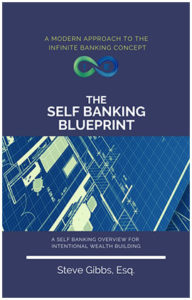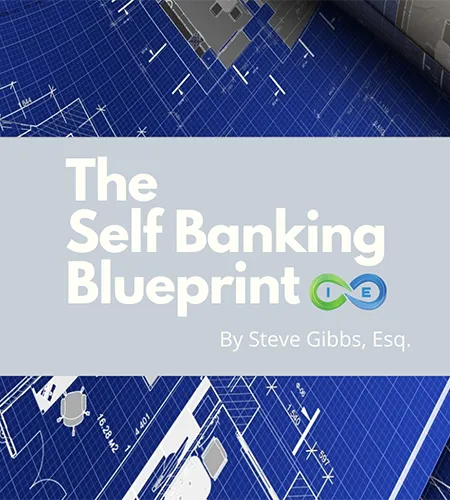Kai-Zen Premium Financing: Leverage Your Way to Enhanced Life Insurance Benefits
Imagine securing 4x the life insurance coverage while paying just 25% of the premium. That’s the power of Kai-Zen’s premium financing strategy—combining your contributions with bank leverage to maximize protection and potential retirement income. Is this innovative approach right for your financial future?
Table of Contents
What is Kai-Zen Premium Financing?
Premium financing for life insurance isn’t new, but Kai-Zen life insurance offers a unique approach. At its core, Kai-Zen is a leveraged insurance strategy that combines participant contributions with bank financing to fund life insurance policies. Understanding how this program works is important in understanding its advantages and disadvantages.
Kai-Zen operates through a structured financing arrangement where participants make premium payments for five to ten years while a bank provides additional funding at a ratio of approximately three to one. This means for every dollar contributed by the participant, the bank adds approximately three dollars in financing. Some banks allow you to make interest only payments on the loaned premiums and the bank loans the full premium payment. The underlying product is an indexed universal life (IUL) insurance policy, which serves as collateral for the bank’s loan. In some cases whole life insurance is used, which we recommend.
Eligibility Requirements
| Requirement | Minimum Criteria |
|---|---|
| Income | Minimum annual income of $100,000 |
| Age | Between 18 and 65 years old |
| Health | Average or better health status |
| Coverage | Minimum death benefit typically starts at $1 million |
How the Kai-Zen Strategy Works
The mechanics of Kai-Zen involve a structured two-phase funding approach. In the first phase (years 1-5), both you and the bank fund the policy – you make your premium contributions while the bank simultaneously provides loan funding. In the second phase (years 6-10), your contributions end while the bank continues with larger premium payments. The loan is structured to be repaid in year 15, and during this time, the policy’s cash value accumulates based on the performance of the chosen market index, subject to caps and floors typical of IUL policies.
Notably, participants don’t sign loan documents or undergo credit checks, as the arrangement is structured through a trust. The life insurance policy itself serves as collateral, and the trust handles the relationship with the lender. This structure aims to protect participants from personal liability while still providing access to the leverage benefits. Here is a quick overview with more detailed info below:
| Phase | Time Period | Key Activities |
|---|---|---|
| Phase 1 Initial Funding |
Years 1-5 |
|
| Phase 2 Bank-Only Funding |
Years 6-10 |
|
| Phase 3 Growth Period |
Years 11-15 |
|
| Phase 4 Access Period |
After Loan Repayment |
|
Phase 1: Initial Funding Period (Years 1-5)
During the first five years, funding comes from both sources:
- You make annual premium contributions plus a $1,350 annual trust fee
- The bank provides matching premium funding
- The policy itself serves as collateral for the bank funding
- No personal guarantee or credit check is required
- All premiums go into your specially designed IUL policy
Phase 2: Bank-Only Funding Period (Years 6-10)
For the next five years:
- Your contributions stop completely
- The bank takes over funding with full annual premiums
- The policy continues to accumulate cash value based on index performance
- The 0% floor protects against market declines
Phase 3: Growth Period (Years 11-15)
During these years:
- No new premiums are paid by either party
- Policy continues to grow based on index performance
- Loan accumulates interest
- At year 15, the bank loan is typically repaid from policy values
- Note: Loan repayment timing may vary based on policy performance
Phase 4: Access Period (After Loan Repayment)
Once the bank loan is repaid:
- You gain full access to policy benefits
- Can begin taking tax-free distributions through policy loans
- Maintain death benefit protection
- Living benefits become available (chronic illness, terminal illness)
- Assignment is released back to your trust
Important Notes:
- The strategy requires maintaining all premium payments for the first 5 years
- Policy performance affects the timing of loan repayment
- The lender has rights to discontinue funding or demand loan repayment based on Master Trust terms
- Access to policy values and benefits is restricted until the bank loan is repaid
Kai-Zen Pros and Cons
| Advantages | Disadvantages & Risks |
|---|---|
|
|
Kai-Zen Benefits and Advantages
The primary appeal of Kai-Zen lies in its ability to magnify the power of premium payments through leverage. For professionals and business owners who already max out their traditional retirement accounts, this strategy offers several notable benefits.
Enhanced Coverage and Benefits
The leverage component allows participants to get substantially more death benefit coverage than they could get through traditional premium payments alone. This increased coverage extends beyond just the death benefit – it also magnifies living benefits such as chronic illness protection and potential supplemental retirement income. For professionals concerned about protecting both their family’s future and their own retirement, this magnification effect can be particularly attractive.
Financial Structure Advantages
The program’s trust structure provides specific financial benefits through its design. Participants aren’t required to personally guarantee the loan or undergo credit checks, which limits their direct financial exposure. The policy serves as the sole collateral for the lending arrangement, with the trust handling all aspects of the bank relationship. This structure creates a layer of separation between the participant and the financing arrangement, potentially reducing personal financial liability.
Capital Efficiency and Liquidity Benefits
One of Kai-Zen’s significant advantages is capital efficiency. Rather than committing large sums to insurance premiums, participants can keep more of their capital working in their business or other investments. For example, instead of paying $100,000 annually in premiums, a participant might contribute $25,000 while achieving the same or better coverage levels through leverage. This approach helps maintain liquidity and allows for continued investment in growth opportunities while still obtaining substantial insurance coverage and benefits. For business owners and professionals who need their capital for operations or other investments, this retained capital feature can be particularly valuable.
Tax Considerations
The strategy takes advantage of the tax treatment of life insurance policies. Potential benefits include tax-deferred growth of the cash value and the possibility of tax-advantaged access to that cash value through policy loans once the bank loan is repaid. For high-income professionals in higher tax brackets, these tax advantages can be beneficial when compared to fully taxable investment alternatives.
Business Planning Applications
For business owners and executives, Kai-Zen offers versatility in business planning. The strategy can be used for key person insurance, buy-sell funding, or executive benefit programs. The leverage component allows companies to provide substantial benefits while managing current cash flow impact, making it an attractive option for business succession and retention planning.
Kai-Zen Disadvantages and Risks
The leveraged nature of Kai-Zen, while providing potential benefits, also introduces significant complexities and risks that should make someone considering it give careful consideration. Understanding these challenges will help you make an informed decision about the strategy.
Limited Access and Control
One of the most significant drawbacks is the extended period during which participants cannot access their policy’s benefits. Until the bank loan is repaid, typically in year 15, participants have no access to the death benefit, living benefits, or cash value. This lengthy period of restricted access can be problematic if unexpected financial needs arise. The requirement for consistent premium payments during the first five years also reduces financial flexibility during that period.
Performance Dependencies
The strategy’s success heavily relies on the performance of the underlying indexed universal life insurance policy. While IUL policies offer downside protection through minimum guaranteed rates, they also cap the upside potential through maximum participation rates and caps. These limitations could impact the policy’s ability to generate sufficient cash value to repay the loan while maintaining meaningful benefits for the participant. The policy must perform well enough to cover both the cost of insurance and the financing costs.
Interest Rate Risk
The bank financing component introduces interest rate sensitivity to the strategy. While participants don’t make direct interest payments, the loan’s cost affects the overall economics of the arrangement. Rising interest rates can reduce the potential benefits of the strategy by increasing the loan balance that must eventually be repaid from the policy’s cash value. This dynamic adds an element of uncertainty to long-term performance projections.
Structural Complexity and Lender Rights
The strategy’s sophisticated structure, involving trusts, bank financing, and insurance policies, creates several layers of complexity. This complexity can make it difficult to fully understand all aspects of the arrangement and may complicate any attempts to modify or exit the strategy before the planned endpoint. The involvement of multiple parties – the bank, insurance carrier, trust, and policy owner – also introduces operational and counterparty risks that must be considered.
Importantly, under the terms and conditions signed by the Master Trust, the lender maintains significant rights that could impact the strategy’s execution. These include the right to discontinue funding new premiums or exit the market entirely. This means that even if the participant fulfills all their obligations, external factors affecting the lender could potentially disrupt the strategy’s implementation. The lender also retains the right to demand loan repayment based on the terms and conditions of the Master Trust documents, adding another layer of uncertainty to the long-term stability of the arrangement.
Market Conditions Impact
Economic conditions can significantly affect the strategy’s performance. Market volatility, interest rate changes, and insurance carrier financial strength all play roles in determining long-term success. The leveraged nature of the arrangement means that adverse conditions can have amplified negative effects on the strategy’s outcomes. During periods of market stress, the combination of poor index performance and high interest rates could create challenging conditions for the strategy.
Ideal Candidates for Kai-Zen
Kai-Zen tends to work best for:
- High-income professionals or executives between ages 18-65
- Individuals who have maxed out traditional retirement planning options
- Those seeking additional protection for both death benefit and living benefits
- Business owners looking for executive benefit solutions or succession planning tools
- People comfortable with long-term financial commitments and some degree of complexity
Essential Due Diligence Steps
Before implementing a Kai-Zen premium finance strategy, consider taking these essential steps:
-
Work with Independent Advisors
The complexity of the program demands expertise not just in insurance, but also in tax planning, retirement strategy, and business planning if applicable.
-
Review Master Trust Documents
Thoroughly understand all terms and conditions, paying particular attention to the lender’s rights, loan repayment terms, and conditions under which the strategy might be modified or terminated.
-
Evaluate Premium Payment Capacity
Consider your ability to maintain the required premium payments for the full five-year period, including potential changes in your income, business situation, or other financial obligations.
-
Compare Alternative Strategies
Evaluate Kai-Zen against other available strategies that might accomplish similar objectives, including traditional premium financing, executive bonus arrangements, or other insurance and retirement planning tools.
Making an Informed Decision
When evaluating Kai-Zen premium financing as a potential strategy, the decision requires careful consideration of your specific financial situation, goals, and risk tolerance. This isn’t a one-size-fits-all solution, but rather a sophisticated financial tool that works best for certain situations and individuals.
Remember that while the leverage component of Kai-Zen can amplify potential benefits, it also magnifies the importance of understanding and accepting the strategy’s risks and limitations before proceeding.
Discover if Kai-Zen Premium Financing is Right for You
Before committing to this sophisticated leveraged insurance strategy, get a personalized analysis from our independent advisory team. We’ll help you understand if Kai-Zen truly aligns with your financial goals and risk tolerance.
- ✓ Receive a detailed breakdown of how Kai-Zen would work in your specific situation
- ✓ Compare Kai-Zen to other premium financing strategies and traditional insurance approaches
- ✓ Understand the potential tax advantages and capital efficiency benefits
- ✓ Get a clear explanation of all risks and commitment requirements
Schedule your complimentary 30-minute Kai-Zen analysis today and take the first step toward leveraged financial protection.
No obligation. No sales pressure. Just expert guidance to help you determine if Kai-Zen premium financing is the right fit for your long-term financial strategy.





